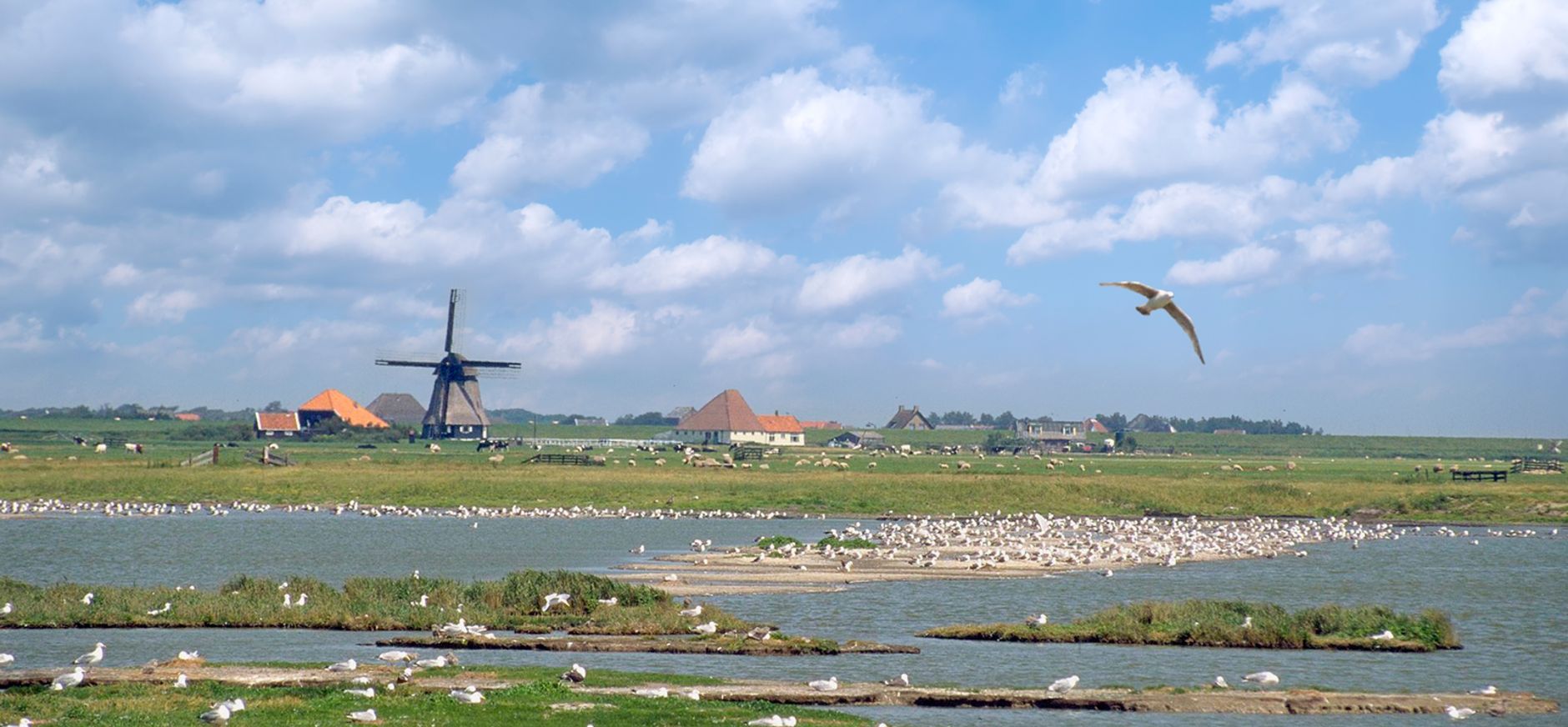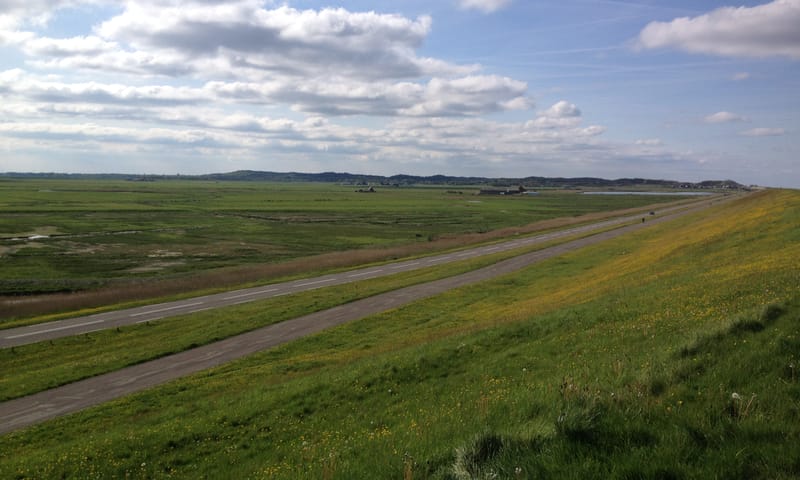Welcome to the Harger- and Pettemerpolder
The Harger- and Pettemerpolder is a stretch of primeval land which has remained largely intact over the centuries. Dotted with winding ditches and bumpy meadows and teeming with birds, glasswort, flowers and the mysterious sea mat, this nature reserve faces directly onto the sea.

Brackish plants spring forth from the seepage in this authentic landscape, where one feels the rush of the wind and marvels at the sight of thousands of birds, colours and the sheer vastness of the land.
Natuurmonumenten (the Dutch Society for Nature Conservation) manages a large part of the Harger- and Pettemerpolder, which dates back to mediaeval times. The present-day roads running through the polder are the remnants of dikes built by monks centuries ago. Part of the ditch pattern, which was formed in the Middle Ages, has remained in its original state. The Harger- and Pettemerpolder is one of the last remaining salt marshes located behind the dikes in the Netherlands.
Unusual plants
Salt and sweet elements blend together in the vast and ancient meadows of the Harger- and Pettemerpolder. The saline seepage appearing from beneath the sea wall is the wellspring of rare and unusual plants such as sea asters and glasswort. The lushness of the summer months makes way for a deep red brown in autumn. These types of brackish areas are rare in the Netherlands, the best-known and most exceptional being the De Putten nature reserve.
Bird-spotting in the Polder
The ponds in the De Putten nature reserve, which attract large populations of birds, were created through clay excavations. In winter, the area is rife with Eurasian wigeons, greater white-fronted geese and rare lesser white-fronted geese, followed by pied avocets and common redshank in the spring. In autumn, Eurasian spoonbills use the area as a stopover site before heading off to their African wintering grounds.
The three man-made shell islands located in the De Putten nature reserve are used as nesting places by thousands of sandwich terns, hundreds of common terns, and numerous other bird species. To get a closer look at these birds, you can go spot them from the bird hide near Abtskolk and De Putten.
Harger Windmill
A venerable old landmark you can see looming from a distance is the Harger Windmill, built in 1804. The mill (manned by a volunteer) keeps water levels in check with a minimal impact on the environment. This area has been home to a windmill since the early fifteenth century, but where the original mill was destroyed, the current structure has survived the ravages of storms and fire.
Protecting the polder
Natuurmonumenten has transformed the original, dull and monotonous grassland into an undulating and varied, sloping landscape. It offers sanctuary to many species of animals, while plants benefit from the differences in height. The Harger- and Pettemerpolder has been designated as a Natura 2000 Special Area of Conservation. The Natura 2000 network is a European network of protected areas.

Natuurmonumenten
Natuurmonumenten is run by and for people who care about nature. As the largest society for nature conservation in the Netherlands, we want to inspire people of all ages and backgrounds to get outdoors and experience the natural world. Natuurmonumenten protects nature areas, valuable landscapes and cultural heritage. All over the Netherlands. For all people. We preserve nature for future generations by purchasing land, managing nature reserves, and making natural areas accessible for all. Because we love nature. Nature makes you feel alive!